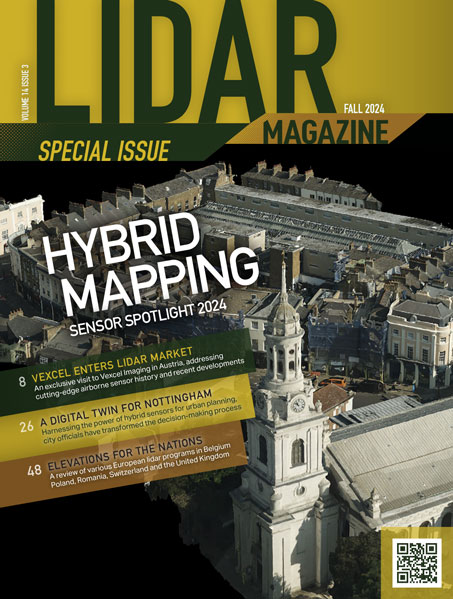The U.S. Senate has approved an amendment to the FAA Reauthorization Bill, S. 223, and the House of Representatives has passed a free-standing bill, H.R. 386, to make it a criminal offense for anyone who aims the beam of a laser pointer at an aircraft in the special aircraft jurisdiction of the United States, or at the flight path of such an aircraft. The legislation defines a laser pointer as any device designed or used to amplify electromagnetic radiation by stimulated emission that emits a beam designed to be used by the operator as a pointer or highlighter to indicate, mark, or identify a specific position, place, item, or object. However, this language was NOT included in H.R. 658, the FAA Reauthorization Bill, and therefore reconciliation is needed during a House-Senate Conference.
MAPPS is deeply concerned that this definition is too broad and vague. It could include LiDAR (Light Detecting And Ranging), a state-of-the art mapping technology that can measure the distance to or other characteristics of an area of land or an object by illuminating the area or item with light beams or pulses from a laser. LiDAR indeed uses a directed beam of light to identify a specific position, but does NOT pose the safety threat of the lasers intended by the legislation. A LiDAR device could be defined as pointing a laser beam, however LiDAR devices are not pointers.
LiDAR is a technology developed by NASA that is now fully commercialized. It is used for accurate floodplain mapping, conducting danger tree surveys of overhead power lines, measuring vegetative cover or biomass for climate change analysis and hundreds of other applications. There are more than 50 aerial LiDAR systems in operation in the United States.
One of the major users of LiDAR is the FAA itself. The FAA uses Single Point LiDAR devices to monitor airports throughout the United States. These devices point at aircraft for the purpose of getting the position of the aircraft during ground movement on the taxiway. LiDAR services, contracted by individual airport authorizes, utilize Stationary Tripod Scanners to survey the interiors and exteriors of structures at airports, Airborne LiDAR is used to conduct obstruction surveys, master planning and pavement surveys of runways. Each of these FAA-related operations would be in violation of the legislative language. In addition, USACE, NGA, USGS, FEMA, NOAA, and other agencies contract for LiDAR.
The legislation is clear in its intent to prohibit inappropriate use of the laser pointer, particularly when the objective is to disrupt or harm a pilot in the cockpit. With a slight modification, the legislative language could meet its intent, without impeding the safe and legitimate used of LiDAR technology.
JUNE 2011 UPDATE: Secretary of Transportation Ray LaHood and Federal Aviation Administration (FAA) Administrator Randy Babbitt announced June 1 that the FAA will begin to impose civil penalties against people who point a laser into the cockpit of an aircraft. Todays interpretation reflects the fact that pointing a laser at an aircraft from the ground could seriously impair a pilots vision and interfere with the flight crews ability to safely handle its responsibilities. The maximum civil penalty the FAA can impose on an individual for violating the FAAs regulations that prohibit interfering with a flight crew is $11,000 per violation.
MAPPS urges that Congressional intent clearly state that LiDAR technology is not a danger to aviation operations, and that this technology enables public policy decisions. This Congressional intent should be entered into the Congressional Record and/or the Conference Report via a colloquy and/or by an official statement.
The following modification is respectfully recommended:
any device designed or used to amplify electromagnetic radiation by stimulated emission that emits a beam designed to be used by the operator as a pointer or highlighter.
For Further Information Contact:
MAPPS
John JB Byrd, Government Affairs Manager
1856 Old Reston Avenue, Suite 205, Reston, VA 20190
P: 703-787-6996; F: 703-787-7550; E: jbyrd@mapps.org; www.mapps.org
